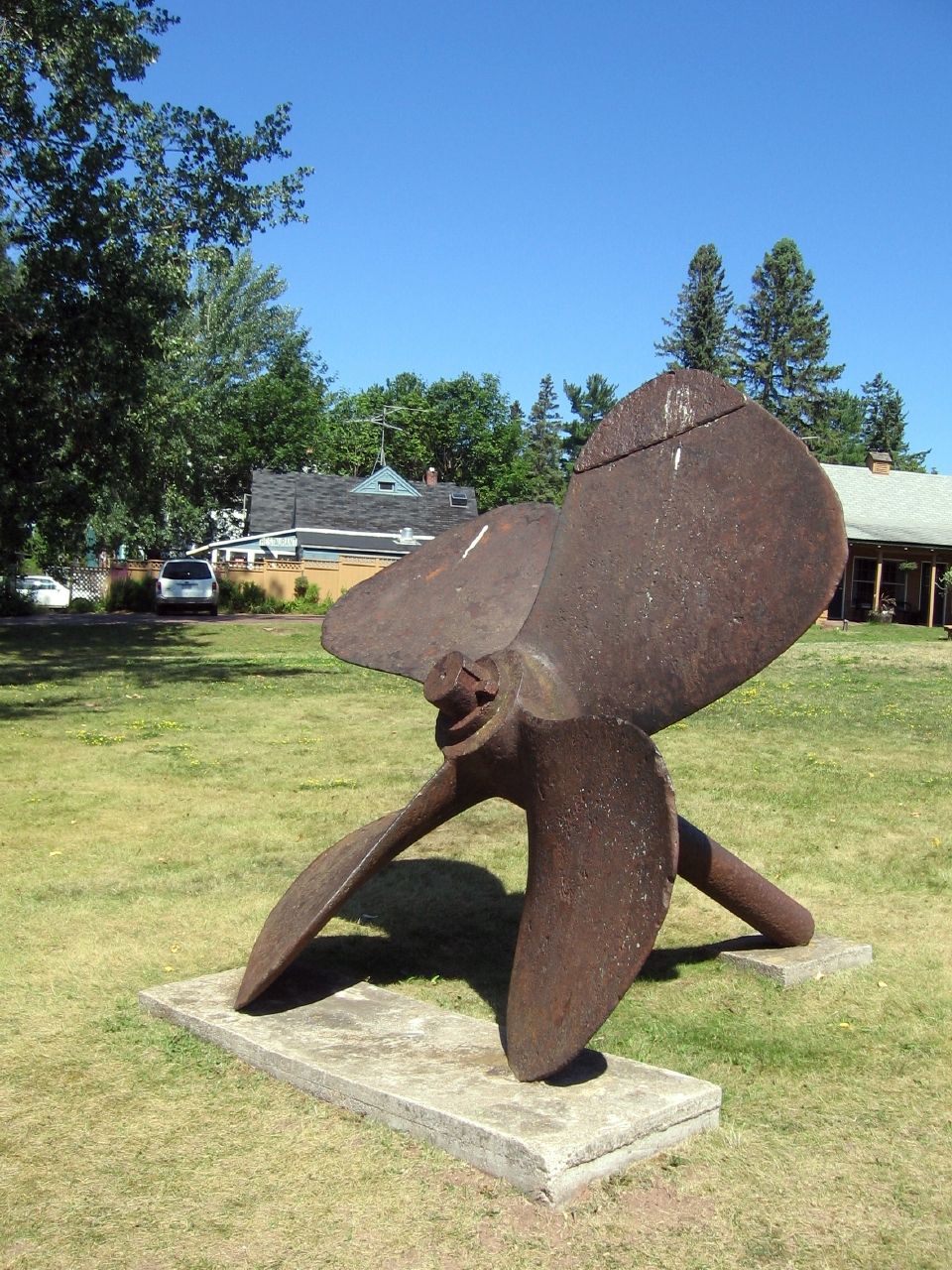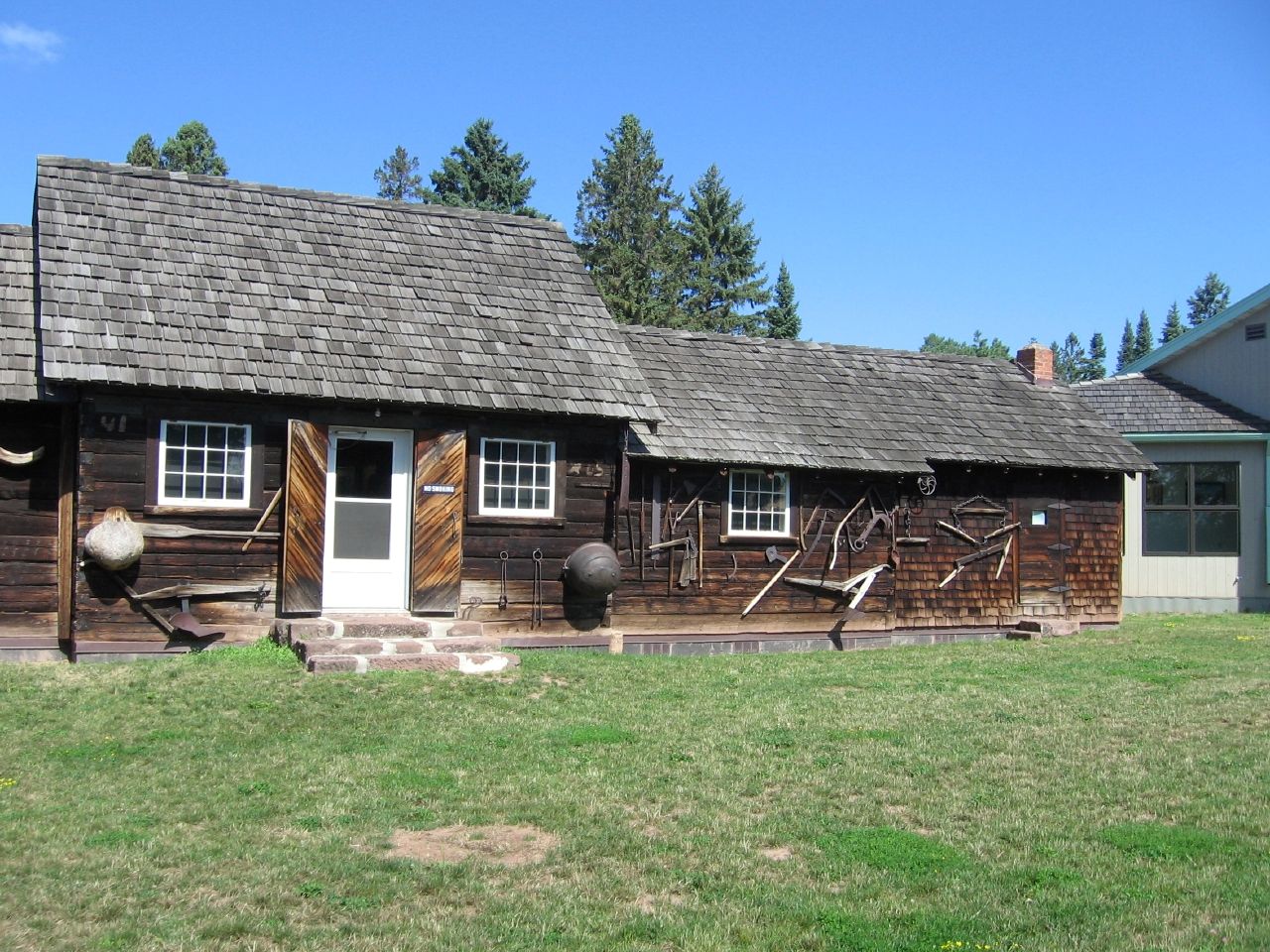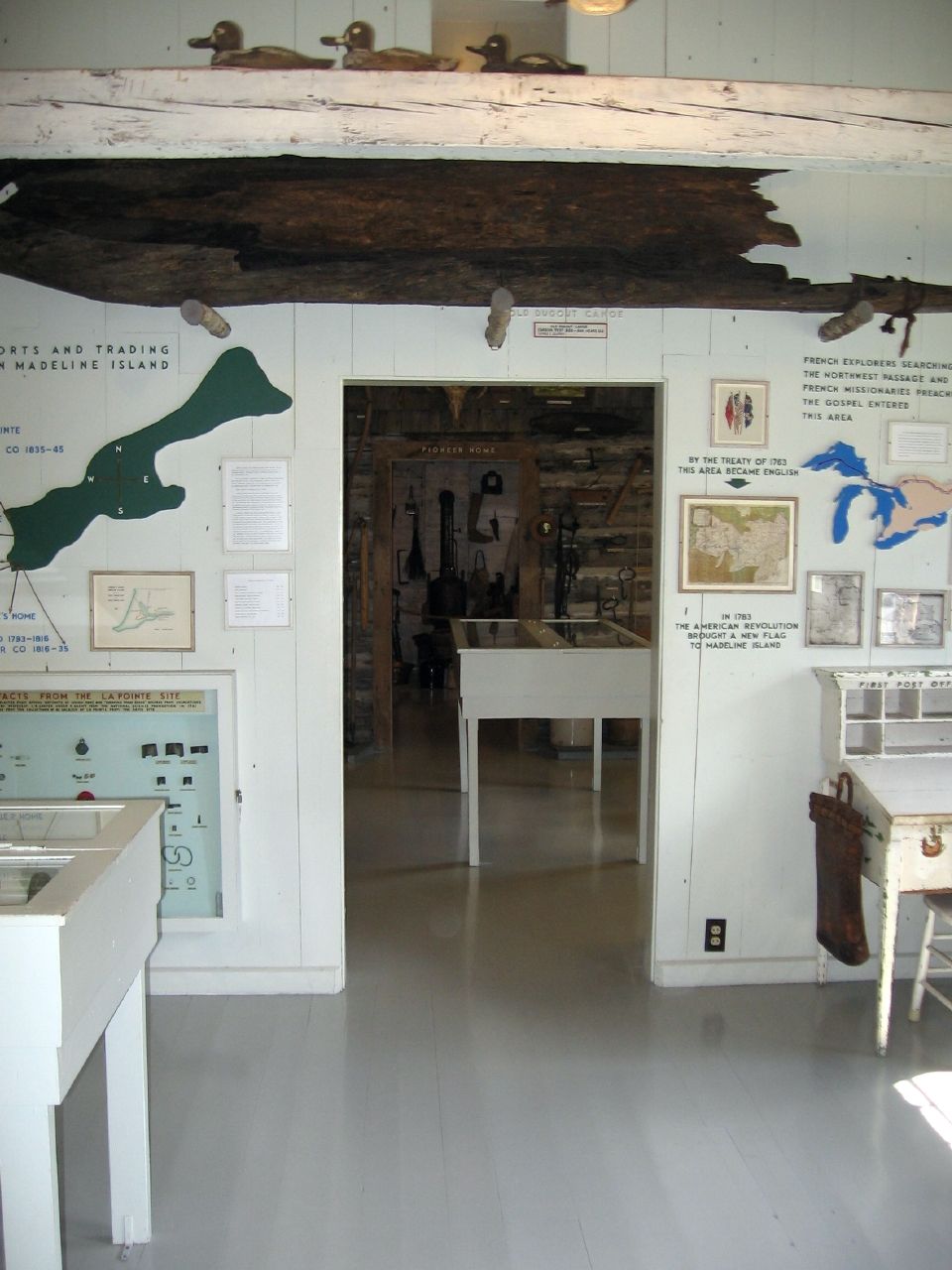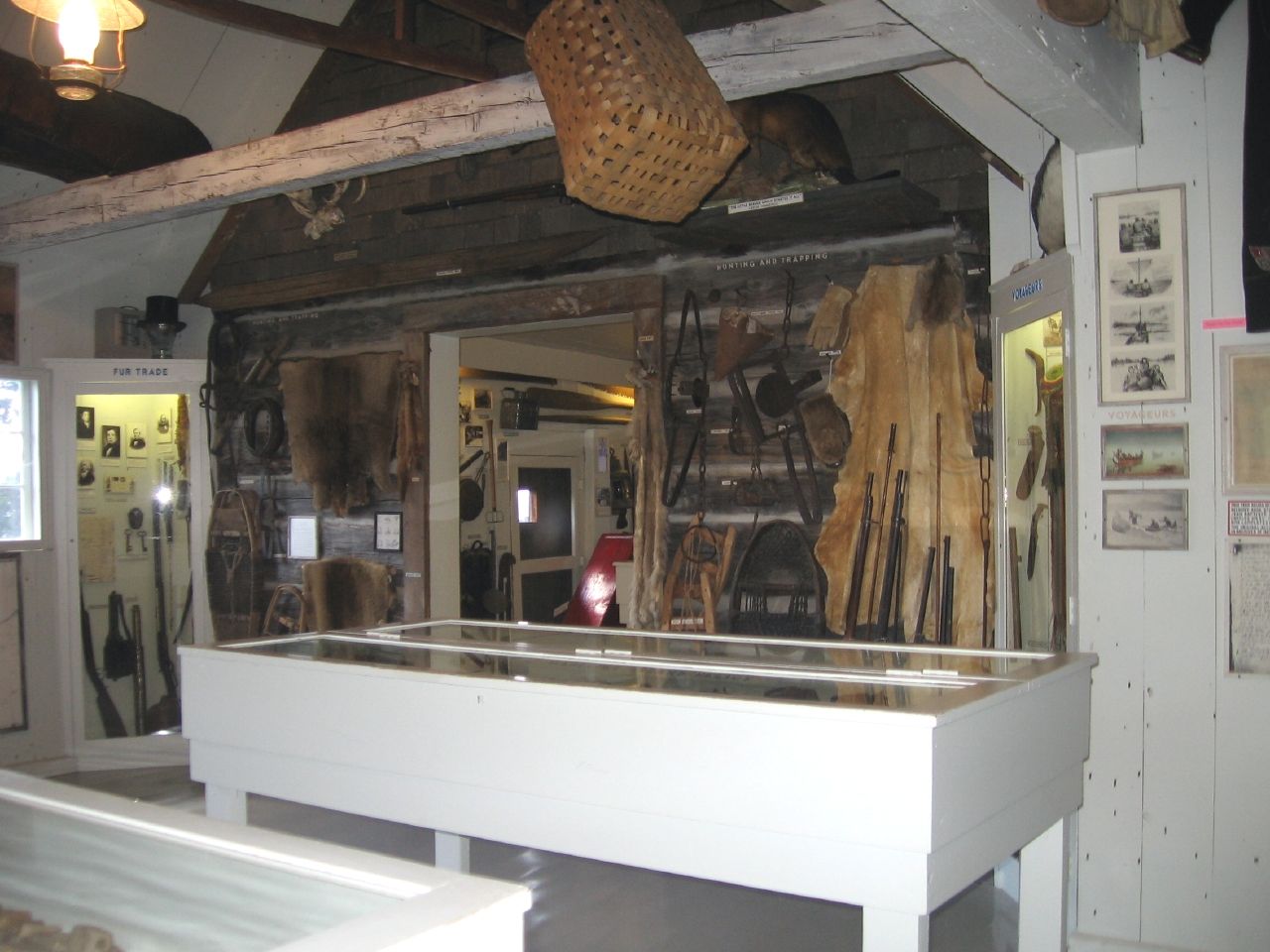La Pointe, Ashland County, Wisconsin, USA (August 2007)

We rolled off the ferry and nearly onto to the doorstop of the Madeline Island Historical Museum (map). Flags from each era of European-American settlement fluttered in the wind, high above the stockade corner. The modern 50-star United States flag claimed its rightful prominence atop the pole. Next below came the United States flag that flew in 1816. It represented the era when the American Fur Company controlled trade throughout the Lake Superior area. The U.S. flew this “Star Spangled Banner” style flag with 15 stars and stripes between 1795 and 1818.
Further below and further back in time unfurled a predominantly red flag. It identified the British North West Company that occupied Madeline Island in the late 18th Century. They used the Naval Red Ensign of Great Britain that flew between 1707 and 1800. Finally, at the bottom of the pole came the French royal flag of the earliest European settlers. This style dated to the 17th Century when the initial French explorers came to Chequamegon Bay. Here they opened a trading post for commercial ventures with the Native Americans.
Historical Marker

A large plaque appeared below the flagpole to provide a succinct history:
“MADELINE ISLAND. Known to the Ojibway Indian as Moningwunakauning ‘The Home of the Golden Breasted Woodpecker.’ The largest of the Apostle Islands was one of the earliest areas of Indian settlement, fur trade, missionary activity and commercial fishing in the interior of North America — it was discovered by French explorers in 1659. Trading posts were built here for the French by Le Sueur in 1693 and for the British by Michel Cadotte in 1793. In 1834 this site and present La Pointe dock became headquarters for the Northern Outfit of the American Fur Company. — Missionary operations began about 1830 with the erection of a Protestant Church followed by Father Baraga’s Catholic Church.”
Museum Buildings

The museum contained two vastly different sections. The original portion, shown above, included multiple historic buildings. They had been cobbled together from several early buildings from different parts of Madeline Island. From left to right, a pioneer barn (the edge barely visible here), the 1835 American Fur Company building (the larger building in the middle with the white door), the Town Jail and finally the Old Sailor’s Home.
Part of the newest structure appears at the far right, painted gray and appearing thoroughly modern. The museum named it the Capser Center after two of the collection’s original founders, Leo and Bella Capser. The couple started pulling together the collection in 1958. This new section contained an auditorium that showed a historical film about the island as well as additional exhibit space.
The grounds themselves offered further artifacts such as the farming and cooking implements hung from the museum’s outdoor wall, along with fishnet drying reals, maple sugar kettles and a large brownstone collected from one of the nearby quarries.
Inside the Museum

Moving into the original portion of the Madeline Island Historical Museum, we first entered the old American Fur Company building. A helpful docent met us at the entrance to provide a general overview of the island’s story. The Fur Company building included a history wall and exhibits on the Native American Ojibwa / Chippewa, the original inhabitants.
Notice the remnant of a dugout canoe hanging above the doorway. It had been carbon dated to about 350 to 500 years old after being found on the island in modern times. Notice also the Madeline Island map, the green diagonal shape just below the left corner of the canoe.
Two other buildings telescoped through the other side of the doorway: the jail and then the Old Sailor’s Home. La Pointe must have been a law abiding town even back in the early days because the jail couldn’t have held more than a couple of people at a time.
The Old Sailor’s Home had an interesting although tragic story. Olaf Anderson built this cabin in the early 20th Century as a memorial to his brother who had drowned in a shipwreck. Any sailor who needed temporary shelter could stay there for free. The museum reconstructed the room to appear as if a needy sailor might be disembarking from the next ferry pulling into the harbor.
Even More Exhibits

This perspective focuses in the opposite direction, again within the American Fur Company building. Notice the antique basket hanging from the rafters. The exhibit along the wall described the history of hunting and trapping on Madeline Island, and included guns, traps, snowshoes and a pelt.
The doorway to the left side led into a small pioneer barn. Exhibits focused on the local Catholic and protestant churches that established themselves in the little town of La Pointe and brought Christian missionaries and ministries to the Apostle Islands as they started to become more settled. Other exhibits in the barn included more recent artifacts and photographs extending well into the 20th Century.

Leave a Reply